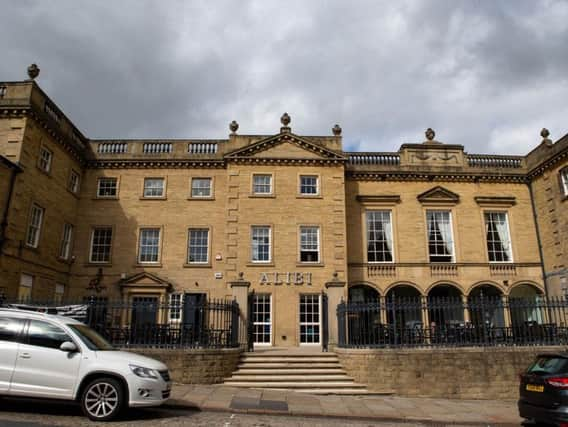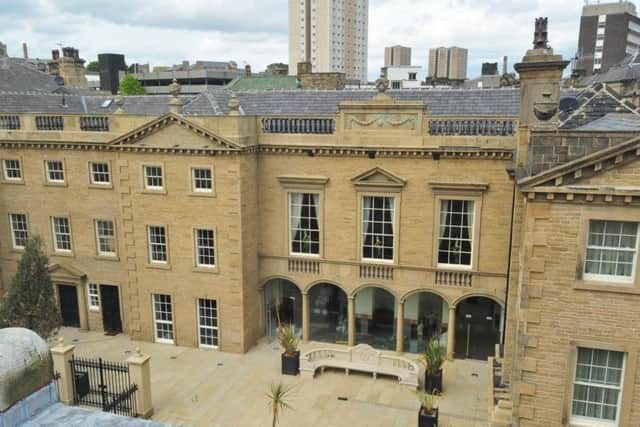Somerset House: How a Halifax bank used by Anne Lister was brought back to life


Built in 1766, it was originally known as Royd's House, and was a vast residence and warehouse with 17 bays used by the textile merchant John Royd, who also had a banking and insurance business.
By the 1800s, the building had been taken over by Rawson's Bank - whose associates included the Lister family of Shibden Hall. Anne Lister, who inherited Shibden, was a regular visitor to the bank in the first half of the 19th century, and her dealings with Rawson's are depicted in the BBC period drama Gentleman Jack.
Advertisement
Hide AdAdvertisement
Hide AdShe and the Rawsons were business rivals, with Christopher Rawson a particular nemesis after they clashed over coal rights. Anne even accused him of stealing coal from her land. Rawson was a magistrate and one of the town's most powerful men, and the feud culminated in him burning effigies of Anne and her same-sex partner Ann Walker on the streets of Halifax.


Incredible impact of Gentleman Jack tourism on Halifax revealed as Shibden Hall closes for winterBBC producers did not use Somerset House to film these scenes, and it's not known why - instead they used the Lawrence Batley Theatre in Huddersfield, a former Methodist chapel that dates back to 1819.
Rawson's later merged their two main branches into the Huddersfield and Halifax Union Banking Company, and allowed upstairs rooms to be used as a post office. In the late 19th century, the house was altered and reduced in size, and re-named Somerset House.
In 1902, a row of shops was built in front of the mansion, obscuring its grand facade.
Advertisement
Hide AdAdvertisement
Hide AdThese units were demolished when it was extensively renovated and re-opened in 2008, after which it became a wedding and events venue. A restaurant called Le Metro also had a unit in the building.
The next chapter in its history began last summer, when developers spent £450,000 on further restoration to turn the space into a bar and restaurant called Alibi. The Grand Salon became a private function room with capacity for 250 people. It opened in August.
Gentleman Jack: The tragic fate of Anne Lister's 'wife' Ann WalkerGeneral manager Andy Pritchard said:
“Halifax is experiencing a huge resurgence in popularity as a destination for heritage, arts and tourism, with venues such as The Piece Hall, Square Chapel and Dean Clough leading the charge in the regeneration of the town’s appeal.”
Advertisement
Hide AdAdvertisement
Hide Ad“Our vision is to offer a premium day-to-night drinks and dining experience in stylish surroundings which will support the town’s growing popularity and be part of the wider regeneration of Calderdale."
Rawson's - a history of the bank that became a major Halifax employer
The Rawson family began banking in 1811, when John, Christopher and William formed branches in Halifax and Huddersfield, In 1836, they pooled their assets to form a joint stock company, the Huddersfield and Halifax Union Banking Company, and began to expand, opening more branches in Sowerby Bridge, Elland, Brighouse, Bradford and Leeds. A Rawson was at the helm as chairman until 1910, when their rival the Halifax Joint Stock Banking Company initiated a takeover. The business became the West Yorkshire Bank in 1911.
The Union Bank, as Rawson's became known, moved out of Somerset House in 1898 and the Huddersfield Building Society later occupied the premises.
Advertisement
Hide AdAdvertisement
Hide AdThe Rawson family seat was Thorpe House, built near Ripponden in 1804, and they were also closely aligned with the Crossley family, the carpet manufacturers whose business was based in Dean Clough Mills. Thorpe House remained in the family until 1957, when Selwyn Rawson sold it and it became a care home until 1994. It was later converted into a hotel and went on the market again last summer.